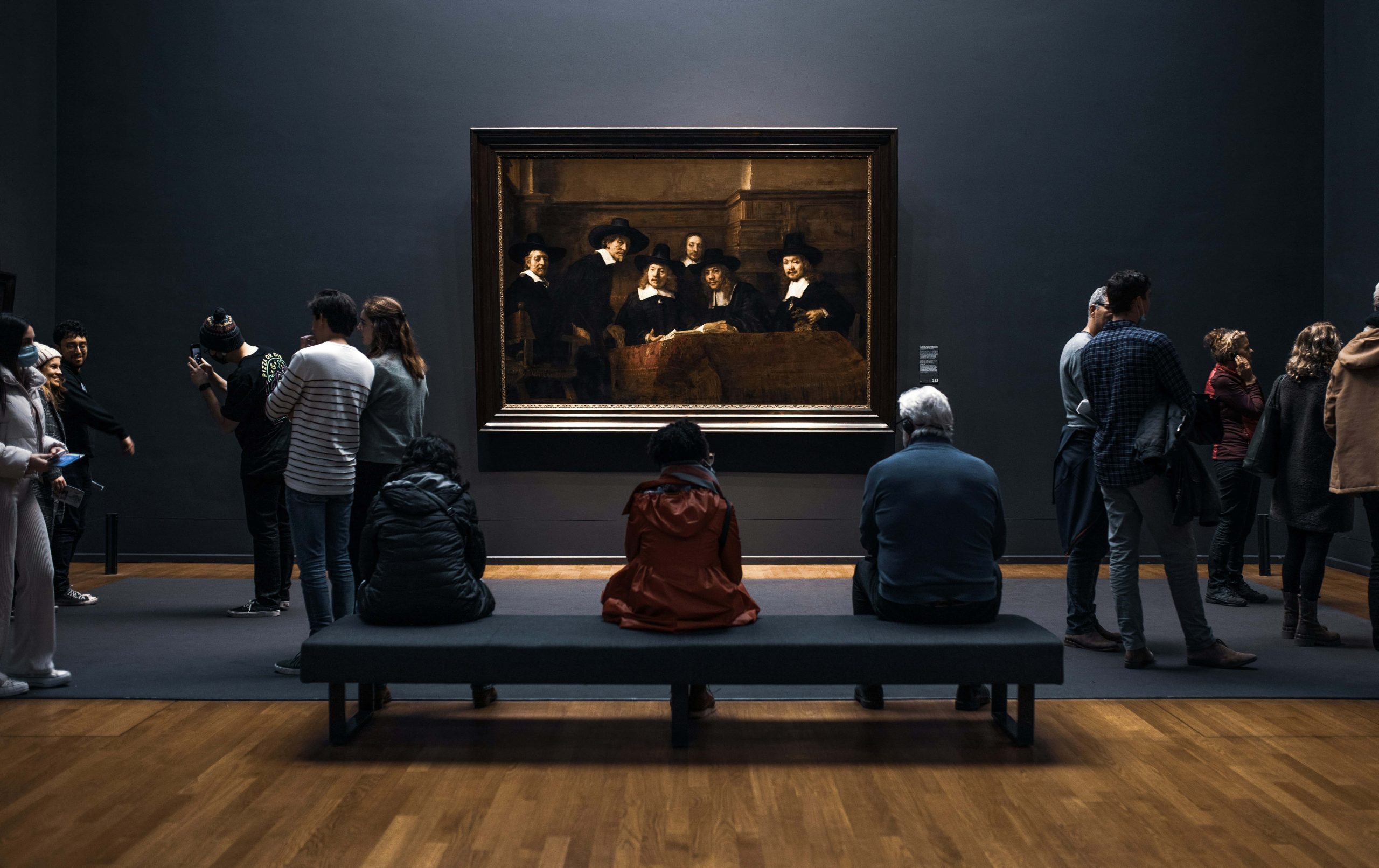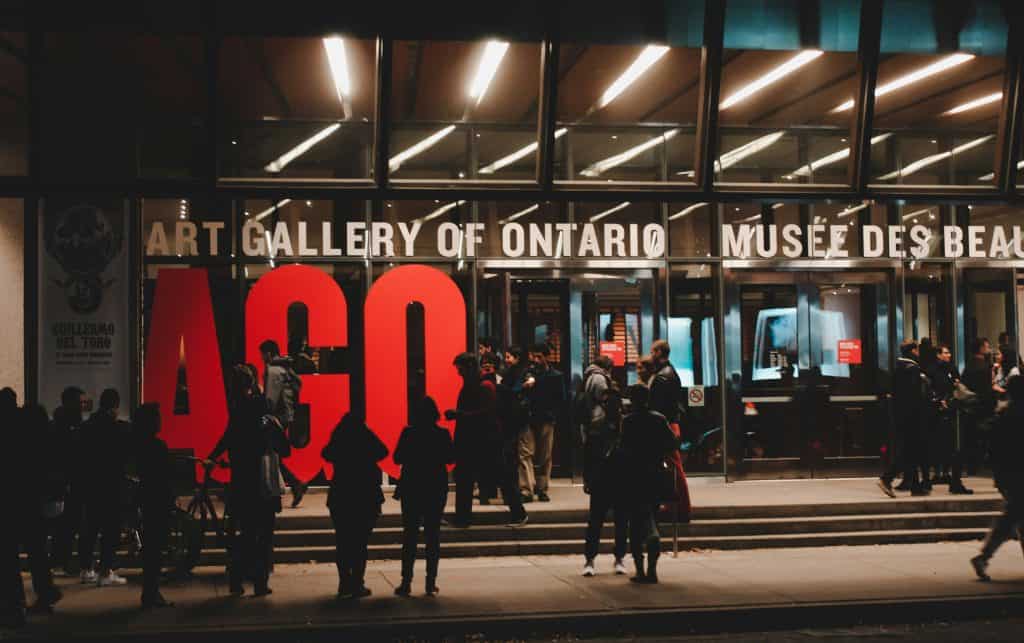
05 Mar Marketing Strategies for Art Exhibitions
Art exhibitions stand as timeless bastions of artistic expression, where creators from various backgrounds converge to unveil their masterpieces to the world. These exhibitions serve not only as showcases for individual talent but also as communal spaces where art enthusiasts, collectors, critics, and the curious come together to explore and engage with diverse artistic perspectives. In today’s ever-evolving cultural milieu, the significance of effective marketing strategies cannot be overstated. As the digital realm continues to reshape the way we consume and interact with art, exhibitions must adapt and embrace innovative approaches to capture the attention of a broader audience. Thus, the intersection of art and marketing becomes a fertile ground for experimentation and creativity, where the fusion of tradition and modernity paves the way for new realms of artistic appreciation and engagement.

Photo by britt gaiser
Understanding Your Audience
Successful marketing hinges on a deep understanding of your audience. Commence with demographical segmentation, categorizing potential segments like local residents, students, art enthusiasts, and families. Take the exploration a step further with psychographic segmentation, delving into their interests, values, and motivations. By utilizing existing visitor data and feedback, you gain a comprehensive grasp of current demographics and preferences. This dual approach empowers you to tailor marketing strategies, ensuring they resonate with specific audience segments.
Incorporating demographical and psychographical insights enables precision in messaging and engagement. The synergy of these segmentation methods, coupled with data-driven analysis, equips marketers to craft campaigns that not only capture attention but also build lasting connections with the audience, fostering loyalty and amplifying the impact of marketing efforts.

Photo by Sean Driscoll
Crafting Your Message
Creating an engaging story for the show is essential to its success. Establish a main topic and important takeaways that best represent the presentation. Utilize language and imagery that speak to the distinct interests and values of each target segment when customizing communications for them. To create a relationship that lasts, highlight the mental and emotional benefits of interacting with the work.
Engaging various groups of visitors requires the use of language and pictures in crucial ways. For example, discuss technical details and historical backgrounds with art connoisseurs. To create a fun experience for families, include interactive aspects. You may create an environment where important experiences transpire and make an imprint that lasts long after visitors have left the exhibition area by allowing them to fully immerse themselves in the narrative.

Photo by Roberto Nickson
Digital Marketing Strategies
In today’s digital landscape, establishing a robust online presence is indispensable. Begin by creating a user-friendly website that showcases high-quality visuals and provides comprehensive information about your brand and offerings. Simultaneously, harness the power of social media platforms like Instagram, Facebook, and X formerly known as Twitter to engage your audience with captivating content, including previews and behind-the-scenes glimpses that showcase your brand’s personality.
Moreover, cultivate a targeted email list to deliver personalized newsletters and explore influencer marketing for broader reach. Collaborating with influencers who align with your brand values can significantly amplify your message and introduce your brand to new audiences. By combining a visually appealing website, active social media engagement, targeted email marketing, and strategic influencer partnerships, you can effectively navigate the digital realm and establish a compelling online presence that resonates with your audience and drives meaningful engagement and conversions.

Photo by Icons8 Team
Traditional Marketing Strategies
While digital strategies undoubtedly play a crucial role in reaching a wide audience, traditional approaches continue to hold sway in certain contexts. Crafting press releases tailored for local media outlets and specialized art publications remains an effective way to garner attention and legitimacy within specific communities. Moreover, strategically placing print and outdoor advertisements in high-traffic areas ensures visibility and resonance with target audiences who may not be reached through solely digital means. Additionally, establishing partnerships with cultural institutions, businesses, or community organizations can yield mutually beneficial outcomes through cross-promotion, expanding reach, and fostering a sense of community engagement. By integrating both digital and traditional methods, businesses and organizations can create comprehensive marketing campaigns that effectively capture the attention of diverse audiences and solidify their presence in the cultural landscape.

Photo by Antenna
Experiential Strategies
To deepen audience engagement, it’s essential to incorporate interactive elements and activities that resonate with diverse interests and preferences. Workshops and talks provide valuable opportunities for hands-on learning and meaningful dialogue, fostering connections between participants and the content. Hosting special events, such as opening receptions, artist talks, film screenings, and family-friendly programs, enriches the cultural experience and attracts a wider range of attendees, creating a vibrant atmosphere of exploration and interaction. Embracing virtual and online accessibility further extends the reach of these offerings, enabling geographically dispersed audiences to participate in the cultural dialogue through virtual tours and digital exhibitions. By blending physical and digital platforms, organizations can create dynamic experiences that transcend boundaries and inspire meaningful connections within their communities, fostering a sense of belonging and shared exploration of artistic expression.

Photo by Myriam Jessier
Measuring and Adapting
Evaluating campaign effectiveness requires diligent tracking of key metrics across various channels. Monitoring website traffic provides insights into online engagement, helping gauge the effectiveness of digital marketing efforts. Social media engagement metrics, such as likes, shares, and comments, offer valuable feedback on content resonance and audience interaction. Attendance numbers at events serve as indicators of overall campaign reach and effectiveness in attracting participation. Additionally, gathering feedback directly from the audience through surveys or comments enables organizations to gain deeper insights into audience preferences and perceptions.
Remaining flexible and adaptive is paramount in refining marketing strategies based on data and audience responses. Analyzing metrics allows for informed decision-making, identifying areas of strength and areas that may require adjustment. By being responsive to audience feedback and adapting strategies accordingly, organizations can continually improve their campaigns, ensuring relevance and resonance with their target audiences. Ultimately, the iterative process of tracking metrics, gathering feedback, and making adjustments enables organizations to optimize their marketing efforts and maximize their impact in engaging and connecting with their audience.

Photo by Headway
Conclusion
Successful marketing strategies for art exhibitions require a comprehensive understanding of the target audience, a compelling narrative, a blend of digital and traditional approaches, and a commitment to measuring and adapting based on feedback and data. By segmenting audiences, crafting engaging messages, utilizing digital and traditional platforms, incorporating experiential elements, and continuously evaluating performance, art exhibitions can attract a wider and more diverse audience. Embracing innovation while staying true to the essence of the artworks showcased is key to ensuring the longevity and impact of art exhibitions in our dynamic cultural landscape. With a thoughtful and multifaceted approach to marketing, art exhibitions can become vibrant and inclusive spaces for artistic expression and community engagement.
Key Takeaways
- Audience-Centric Approach: Understanding your audience is foundational to successful marketing, requiring segmentation by demographics and psychographics, and utilizing existing data and feedback to tailor strategies accordingly.
- Compelling Storytelling: Crafting a narrative that aligns with your audience’s interests and values is paramount, emphasizing the emotional and mental benefits of engagement while customizing communications for each audience segment.
- Integrated Marketing Strategies: Combining digital and traditional methods ensures comprehensive reach, utilizing social media, influencer marketing, email newsletters, press releases, print ads, and partnerships to maximize exposure.
- Engagement and Experience: Enhancing audience engagement through interactive elements, special events, and virtual accessibility fosters memorable experiences, attracting diverse audiences and expanding reach.
- Data-Driven Adaptation: Measuring key metrics such as website traffic, social media engagement, and attendance numbers guides effective evaluation, while gathering feedback and remaining flexible allows for continual adaptation and improvement of marketing strategies.
FAQs
How important is it to understand audience demographics?
Understanding audience demographics is paramount in crafting effective marketing campaigns. By delving into demographic data, marketers gain insights into the characteristics, preferences, and behaviors of different audience segments. This knowledge enables them to tailor messages and strategies that resonate with specific groups, increasing the likelihood of capturing attention and driving desired actions. For instance, understanding the age, gender, income level, geographic location, and interests of the target audience allows marketers to create content and choose channels that are most likely to appeal to them. Consequently, a nuanced understanding of audience demographics forms the foundation for strategic decision-making in marketing, helping businesses maximize their resources and achieve their objectives effectively.
Why combine both digital and traditional marketing strategies?
Combining both digital and traditional marketing strategies offers numerous advantages in reaching and engaging diverse audiences. While digital marketing leverages online platforms and technologies to target specific demographics and track engagement metrics, traditional marketing channels such as print, television, and radio continue to hold sway over certain demographics and regions. By integrating both approaches, businesses can cast a wider net, ensuring exposure across multiple touchpoints and preferences. Digital marketing enables precise targeting and personalized messaging, while traditional channels often offer broader reach and a sense of familiarity. The synergy between digital and traditional strategies enhances brand visibility, reinforces messaging consistency, and cultivates brand loyalty among diverse consumer segments, ultimately driving business growth and market presence.
What is the significance of experiential strategies in art exhibition marketing?
Experiential strategies play a pivotal role in the marketing of art exhibitions, offering attendees immersive and memorable encounters that transcend traditional viewing experiences. By integrating interactive elements, sensory stimulation, and participatory activities, art exhibitions transform passive observers into active participants, fostering deeper emotional connections with the artwork and the artists. Experiential strategies captivate audiences by appealing to their senses, emotions, and intellect, enriching their overall cultural experience and encouraging meaningful engagement with the artistic content. Whether through interactive installations, guided tours, live performances, or multimedia presentations, experiential marketing creates memorable moments that resonate long after the exhibition ends, sparking conversations, generating buzz, and cultivating a loyal following within the art community.
How can artists measure the success of their marketing efforts?
Measuring the success of marketing efforts is essential for artists seeking to assess the impact of their promotional activities and refine their strategies accordingly. Artists can track various metrics to gauge the effectiveness of their marketing campaigns, including website traffic, social media engagement, attendance numbers, and sales conversions. By analyzing these metrics, artists can discern patterns, identify areas of improvement, and fine-tune their marketing tactics to better align with their goals and audience preferences. For instance, monitoring website traffic and social media engagement provides insights into audience engagement levels, content resonance, and conversion rates, enabling artists to optimize their online presence and outreach efforts. Similarly, tracking attendance numbers and sales conversions offers tangible indicators of audience interest and purchasing behavior, informing future exhibition planning, pricing strategies, and promotional initiatives. By embracing data-driven approaches to measuring success, artists can refine their marketing efforts, expand their reach, and foster deeper connections with their audience, ultimately enhancing their artistic visibility and commercial success.
“Interactive Elements in Digital Art Shows” can elevate the viewer’s experience by enabling active participation, personalized exploration, and deeper engagement with artworks, fostering a dynamic and immersive encounter that transcends traditional boundaries of interaction and interpretation.

